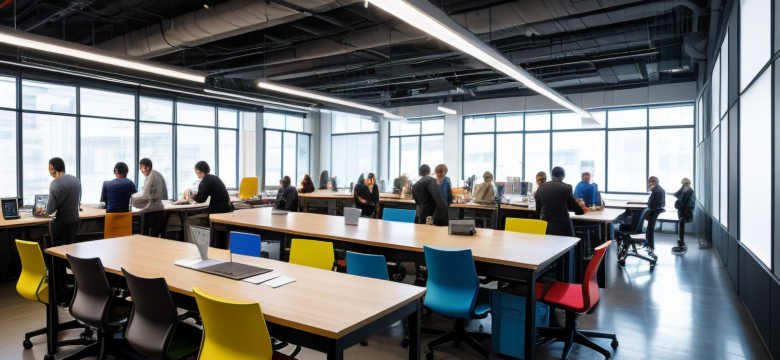Ever wondered what makes a workshop truly unforgettable? It’s not just about the content; it’s about the experience! The most effective workshops are meticulously crafted to ensure that every participant feels engaged, valued, and inspired. Imagine walking into a room buzzing with energy, where ideas flow as freely as coffee! That’s the magic that happens behind the scenes.
At the heart of these workshops lies a clear set of objectives. Knowing what you want to achieve is like having a roadmap on a long journey. Without it, you might find yourself lost in a maze of discussions without purpose. Effective facilitators start by outlining specific goals, which not only keeps the session focused but also drives participant engagement. Think of it as setting the stage for a captivating performance where everyone knows their role.
But it doesn’t stop there! Engaging formats are essential. Whether it’s hands-on activities, lively discussions, or eye-opening presentations, the right mix can transform a mundane session into a vibrant learning experience. For instance, incorporating interactive activities can significantly boost involvement. Imagine participants working together to solve a challenge or brainstorm ideas—it’s like a spark igniting creativity!
As we dive deeper, consider the physical space too. An inviting atmosphere can make all the difference. Comfortable seating, good lighting, and even the right temperature can create a space where participants feel at ease and open to sharing. After all, a workshop is not just about learning; it’s about building connections and fostering trust among participants, which is crucial for collaboration.
Understanding Workshop Objectives
When it comes to running a successful workshop, clearly defined objectives are absolutely essential. Think of them as the roadmap that guides both the facilitator and participants through the session. Without these guiding principles, the workshop can easily veer off course, leaving everyone feeling lost and disengaged. Setting specific goals not only enhances focus but also drives participant engagement, ensuring that everyone is on the same page and working towards a common aim.
Consider the following points when establishing your workshop objectives:
- Clarity: Objectives should be straightforward and easy to understand. Avoid jargon that might confuse participants.
- Relevance: Ensure that the objectives align with the needs and interests of your audience. This makes the content more relatable and engaging.
- Measurable Outcomes: Define what success looks like. This could be through participant feedback, knowledge gained, or skills developed.
By taking the time to articulate these objectives before the workshop begins, facilitators can create a focused environment where participants feel motivated and empowered. It’s like setting the stage for a brilliant performance; when everyone knows their role and the desired outcome, the entire experience becomes more enriching and impactful.
Engaging Workshop Formats
When it comes to running a successful workshop, the format you choose can make all the difference. Think of it like a well-cooked meal; the ingredients matter, but the way you present them is what really leaves a lasting impression. Engaging workshop formats not only capture attention but also foster an environment where participants feel motivated to contribute and learn. So, what are some effective formats that can elevate your workshop experience?
One popular approach is incorporating hands-on activities. These activities allow participants to dive straight into the material, making the learning process feel less like a chore and more like an adventure. Imagine the excitement of building something with your own hands; it’s a game-changer! Additionally, group discussions can facilitate rich conversations, enabling participants to share insights and perspectives that enhance collective understanding.
Another effective format is role-playing scenarios. This method immerses participants in real-world challenges, allowing them to step into different shoes and explore solutions creatively. It’s like being an actor in a play, where each person contributes to the narrative, making the learning experience dynamic and unforgettable. By mixing these formats, you can create a workshop that not only informs but also inspires!
Interactive Activities
Incorporating into workshops is like adding spices to a dish; it transforms the experience from bland to extraordinary! These activities not only engage participants but also create an environment where learning feels natural and enjoyable. Imagine a workshop where everyone is actively participating, sharing ideas, and collaborating. Sounds exciting, right?
One effective method to boost involvement is through hands-on exercises. For instance, consider using case studies that allow participants to tackle real-world problems in small groups. This not only encourages teamwork but also helps individuals apply theoretical knowledge in practical scenarios. In addition, activities like brainstorming sessions can ignite creativity and lead to innovative solutions.
Moreover, incorporating gamification elements can elevate the energy in the room. Think of quizzes or friendly competitions that challenge participants while making learning fun. Not only do these activities keep participants on their toes, but they also foster a sense of camaraderie that enhances the overall experience.
Ultimately, the key is to create a dynamic atmosphere where participants feel comfortable to express themselves. When they’re engaged in interactive activities, they’re more likely to retain information and apply it in their professional lives. So, why not spice up your next workshop with some interactive flair?
Group Discussions
Group discussions are like the secret sauce that can transform a workshop from mundane to magical. They create a vibrant tapestry of ideas, where every participant adds a unique thread to the conversation. But how do you ensure these discussions are not just noise in the room? First, it’s important to establish a clear structure. Start with a thought-provoking question that sparks curiosity and encourages everyone to share their perspectives. This not only ignites the conversation but also fosters a sense of belonging among participants.
Moreover, consider using facilitation techniques to guide the discussion effectively. Techniques such as:
- Active Listening: Encourage participants to listen to one another, promoting deeper understanding.
- Open-Ended Questions: Use questions that can’t be answered with a simple ‘yes’ or ‘no’ to stimulate more in-depth responses.
- Summarising Points: Periodically summarise what has been discussed to keep the conversation on track and reinforce key ideas.
By implementing these strategies, you create an environment where participants feel valued and heard. This not only enhances their learning experience but also builds a community of trust and collaboration. Remember, the goal is to cultivate a space where ideas can flourish, and everyone walks away feeling enriched and inspired.
Role-Playing Scenarios
Role-playing scenarios are not just fun and games; they are a powerful tool for learning and development. Imagine stepping into someone else’s shoes, experiencing their challenges, and finding solutions in real-time. This immersive approach can transform a workshop into a dynamic learning environment where participants actively engage with the material. By simulating real-world situations, attendees can practice skills and strategies in a safe setting, making the learning process both effective and memorable.
To implement role-playing effectively, it’s essential to create well-defined scenarios that reflect realistic challenges participants might face. Here are a few tips to consider:
- Define Clear Objectives: Each scenario should have specific learning outcomes to guide participants.
- Encourage Creativity: Allow participants to improvise and explore different approaches to problem-solving.
- Debrief After Each Role Play: Discuss what worked, what didn’t, and how participants felt during the exercise.
By fostering a safe and supportive atmosphere, you can encourage participants to take risks and express themselves freely. This not only enhances their learning experience but also builds confidence and team collaboration. Ultimately, role-playing scenarios can elevate a workshop from ordinary to extraordinary, making the learning process both engaging and impactful.
Feedback and Evaluation
Gathering feedback is not just a box-ticking exercise; it’s the lifeblood of continuous improvement in workshops. Imagine hosting a workshop where every participant leaves feeling empowered and engaged—this is achievable when you actively seek their opinions. By implementing structured feedback mechanisms, you can gain invaluable insights into what worked and what didn’t. Consider using a combination of surveys, one-on-one interviews, and group discussions to collect diverse perspectives.
For instance, after the workshop, you might distribute a simple survey that asks participants to rate various aspects of the session. Here’s a quick example of what that could look like:
| Aspect | Rating (1-5) |
|---|---|
| Content Relevance | |
| Engagement Level | |
| Facilitator Effectiveness |
Additionally, encouraging open-ended feedback can reveal surprising insights. Ask questions like, “What was your biggest takeaway?” or “How can we improve future workshops?” This not only fosters a sense of ownership among participants but also builds a community of learners who feel valued. Remember, the goal is to create a loop of evaluation that informs your next steps, ensuring each workshop is better than the last. So, don’t shy away from asking for feedback; embrace it!
Creating a Comfortable Environment
Creating a comfortable environment is not just about the physical space; it’s about crafting an atmosphere where participants feel valued and engaged. Imagine walking into a room that feels like a warm hug—inviting, spacious, and filled with natural light. This is the kind of setting that can make all the difference in how participants interact and absorb information. A well-thought-out layout can enhance communication and collaboration, making it easier for everyone to connect.
When designing your workshop space, consider the following elements:
- Seating Arrangements: Opt for flexible seating that encourages movement and interaction. Circle or U-shaped configurations often work wonders.
- Lighting: Natural light can uplift spirits. If that’s not possible, use soft, warm lighting to create a welcoming ambiance.
- Comfort Items: Provide cushions or blankets for added comfort, making participants feel at home.
Moreover, it’s essential to foster an emotional space where participants feel safe to share their thoughts. Establishing ground rules can help create an atmosphere of trust. When participants know their opinions are valued, they’re more likely to engage openly. This encourages a cycle of collaboration and creativity, transforming a simple workshop into a memorable experience.
Physical Space Considerations
When it comes to hosting a successful workshop, the physical space you choose can make all the difference. Imagine walking into a room that feels cramped and uninspiring; it’s likely to dampen your enthusiasm right from the start. On the other hand, a well-designed space can energise participants and foster creativity. So, what should you consider when setting up your workshop environment?
First and foremost, layout is crucial. An open layout encourages interaction, while a circular seating arrangement can promote inclusivity. Think of it like a campfire; everyone gathers around to share stories, making it feel warm and inviting. Here are some essential aspects to keep in mind:
- Seating Arrangement: Ensure that chairs are comfortable and arranged to facilitate discussion.
- Lighting: Natural light can uplift spirits, so try to utilise windows whenever possible.
- Technology: Ensure that all necessary equipment, like projectors and sound systems, are functioning properly.
Additionally, consider the decor. Bright colours and inspiring artwork can stimulate creativity and make the space feel more welcoming. Remember, a well-thought-out environment not only enhances learning but also leaves a lasting impression on participants, making them eager to return for future workshops.
Building Trust Among Participants
Trust is the glue that holds any workshop together, creating a space where participants feel safe to share ideas and engage openly. Imagine a workshop as a garden; without nurturing, nothing will grow. To cultivate this trust, facilitators can employ several strategies that foster a sense of belonging and encourage collaboration.
One effective method is to start with icebreaker activities. These can help participants feel more comfortable with each other, breaking down barriers and paving the way for honest communication. Consider using activities that allow individuals to share personal stories or interests, as this can humanise participants and build connections. Additionally, establishing ground rules for respectful dialogue can set the tone for a supportive environment.
Another key aspect is to encourage active participation. When participants feel their contributions are valued, it enhances their sense of ownership and trust within the group. This can be achieved through:
- Encouraging questions
- Recognising contributions
- Facilitating open discussions
Ultimately, building trust is an ongoing process that requires patience and consistent effort. By creating a space where participants feel valued and respected, workshops can transform into powerful platforms for learning and collaboration.
Frequently Asked Questions
- What are the key objectives of an effective workshop?
Effective workshops aim to achieve specific goals, such as enhancing participant skills, fostering collaboration, and providing valuable insights. Clearly defined objectives help maintain focus and drive engagement throughout the session.
- How can I make my workshop more engaging?
To boost engagement, consider incorporating various formats like hands-on activities, group discussions, and role-playing scenarios. These interactive elements encourage participation and create a dynamic learning environment.
- Why is feedback important after a workshop?
Feedback is crucial for continuous improvement. It helps facilitators understand what worked well and what needs refining, ensuring that future workshops are even more effective and tailored to participants’ needs.
- How can I create a comfortable environment for participants?
A supportive atmosphere is vital for participant comfort. Pay attention to the physical layout of the space and foster trust among participants to encourage openness and creativity during discussions.





